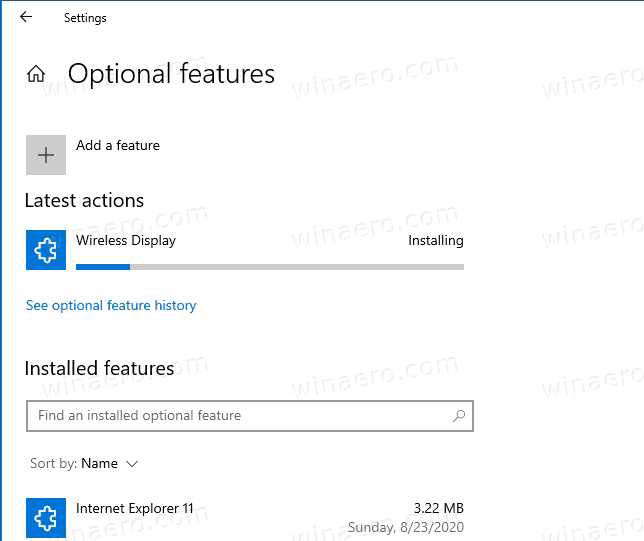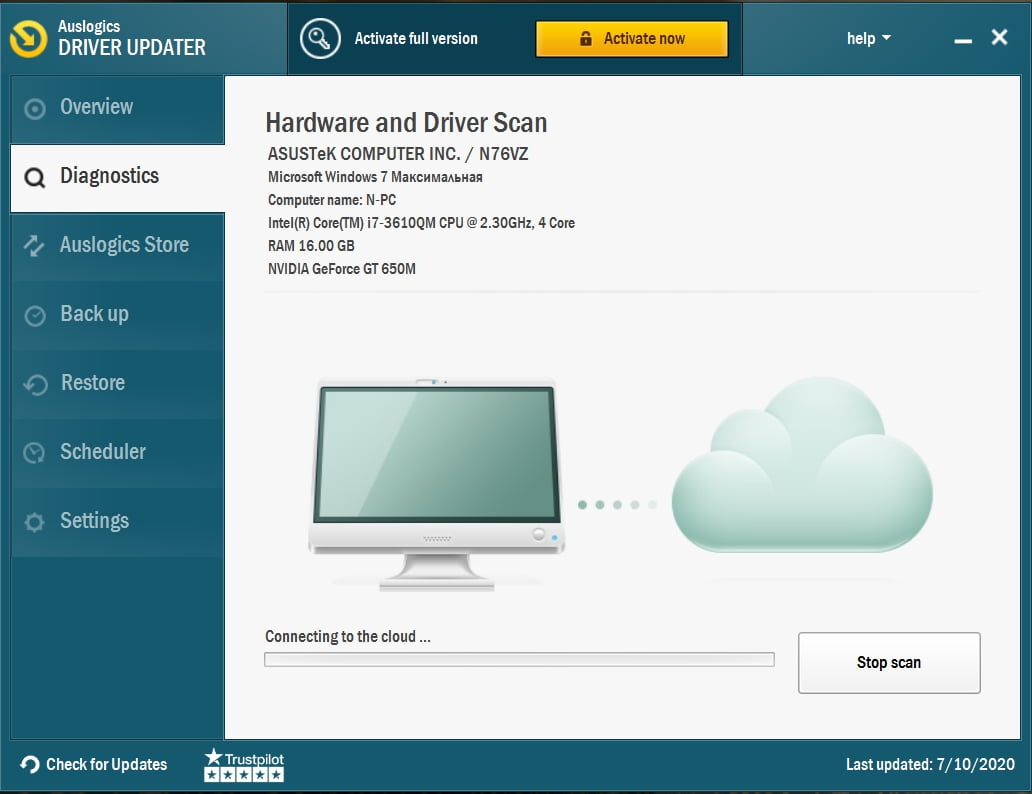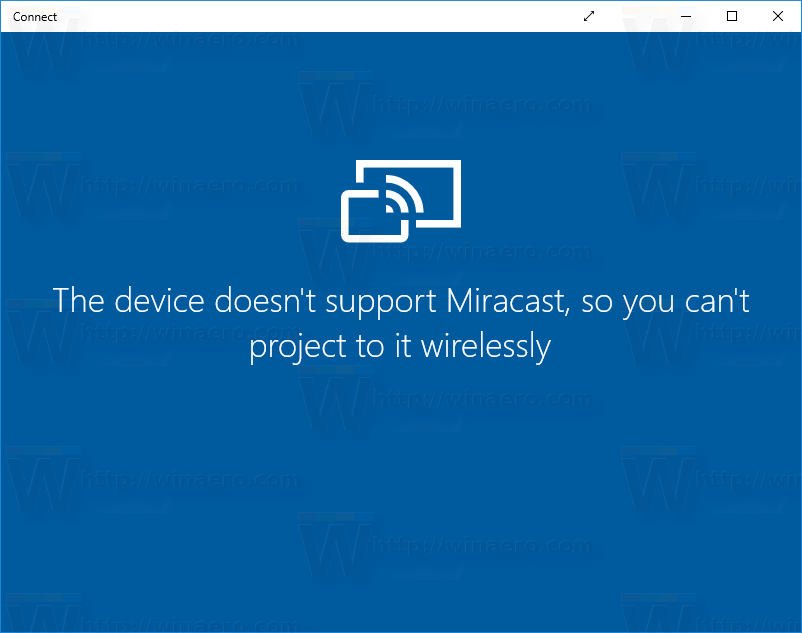Miracast displays that will be suppor by Windows Event Driver Model (WDDM) 1.3. The best thanks to updating your Intel wireless driver and software package is to transfer and install the Intel Driver Update Utility Tool. This tool mechanically checks and updates your drivers to the most recent version. To check if Wi-Fi is enabled on Windows 10, follow this procedure: Press the Windows logo key + R to open the Run dialog. Type ms-settings:network-wifi in the text box. Press enter or click OK. You’ll be led to the Wi-Fi tab of the Network and Internet Settings menu. Click on the toggle to activate Wi-Fi if it is deactivated. As of Windows 10, the OS ships with a built-in Miracast stack that can work on any GPU and it is no longer recommended that drivers implement a custom Miracast stack. This documentation is therefore deprecated and Microsoft may remove support for custom Miracast stacks in a future version of Windows. Miracast allows users to wirelessly share multimedia, including high-resolution pictures and high-definition (HD) video content between Wi-Fi devices, even if a Wi-Fi network is not available. You may want to check out more software, such as AirServer or UIBCReceiver, which might be similar to Miracast.
Summary :
Miracast is a good choice you can make to connect your PC screen with other displays like TV or Projector. A great many users are looking for answers on Google about how to enable Miracast on Windows 10. In today’s article, MiniTool Solution will walk you through to enable Miracast on Windows.
Miracast Not Working after Windows 10 Update. Miracast is a certification standard run by the Wi-Fi Alliance. It can enable certified (Miracast-certified) devices such as laptops, smartphones, and tablets to communicate with TVs, monitors, and projectors without cables.
Quick Navigation :
What Is Miracast
Miracast on Windows 10, a wireless technology, was designed by Wi-Fi Alliance to mirror your PC screen to TVs, projectors, and other media players. With Miracast, you don’t have to look for any wires or converters that can be compatible with your device, so it is a great convenience.
Besides, you can send the PC screen up to 1080p HD video (H.264 codec) and 5.1 surround that is more than enough for average users.
This article provides you with several troubleshooting methods to fix the “failure to display security and shutdown options” problem.
How to Check If Your Windows PC Supports Miracast



The first step you need to do is to check if your device supports the Miracast on Windows 10. You can follow the steps below to do.
Step 1. Press Win + R keys to open the Run dialog box and then type dxdiag and hit Enter.
Step 2. Press the Save all information button on the bottom to save the text file at the desired location.
Step 3. Now open the text file and navigate to the Miracast, and then check if it is available at the current status.
After checking the Miracast on Windows 10 is available, the more important thing is how to enable Miracast on Windows 10. Please keep reading the following part.
According to a support document from Microsoft, the company will release a fix for Windows 10 May 2019 update block issue by the end of this month.
How to Enable and Use Miracast on Windows 10
Step 1. If your TV or projector comes with built-in Miracast support, just turn it on. If not, you need to connect the external displayer with the HDMI port of the TV and power it on.
Step 2. Right-click on the Start menu on the bottom left of your PC, and select Settings.
Step 3. Inside the Settings window, navigate to the Device and double-click it.
Step 4. Now select the Connected devices on the left tab and click on the Add a device on the right side.
Step 5. Then wait for the displays to appear in the list. Click on the receiving display. After that, you can enable the Miracast on Windows 10 successfully.
Right now, you can press Win + P to configure both the Miracast on Windows and the display.
What Can I Do If Miracast on Windows 10 Not Working
It is reported that some users encounter the problem “Miracast on Windows 10 not working” sometimes. Here are several suggestions that might help you.
- If Miracast fails to work, the first step you need to do is check if your device drivers are up to date, including all the displays and Wi-Fi drivers And make sure your PC supports the Wi-Fi directly.
- If this problem is still not resolved after installing the updated devices drivers, then it is recommended that you try another Adapter like Microsoft Wireless Display Adapter.
- If the above solutions fail to solve your problem, you can consult the respective manufacture to get a solid solution.
Well, all information about how to get Miracast on Windows 10 and other useful tips are told to you.
Miracast is a nice feature which allows you to project the entire display of your tablet, smartphone or laptop using Wi-Fi Direct to an external wireless display such as a TV. The external display must support Miracast or you must have a Miracast-supporting receiver device that connects to your display via HDMI. If your device is running Windows, here is how you can quickly check if it has support for Miracast.
Miracast has certain requirements:
- Graphics driver must support Windows Display Driver Model (WDDM) 1.3 with Miracast support
- Wi-Fi driver must support Network Driver Interface Specification (NDIS) 6.30 and Wi-Fi Direct
Miracast Driver Windows 10 Update
- Windows 8.1 or Windows 10
To see if your PC supports Miracast, you can use the DirectX diagnostic tool (dxdiag.exe). It exists in Windows for a very long time. Run it as follows.
Check if your PC supports Miracast wireless streaming
- Press Win + R keys together on the keyboard to open the Run dialog. Type dxdiag in the Run box as shown below:
- Click the button 'Save all information...' to save all the collected information to a text file:
- Enter the file name and save the file to the desired location.
- Now, open the saved file with Notepad and look for a line contains the 'Miracast' portion. You can press Ctrl+F to open the Find dialog and type: miracast. If it says 'Miracast: Supported' in the file, then it means your PC supports the Miracast wireless streaming feature.

Note that Windows 8.1 and Windows 10 only have the ability to send/broadcast your screen using Miracast to a receiver device. But it does not have the built-in ability to receive Miracast signal from another device out-of-the-box. It only has the necessary APIs to support this, so to receive using Miracast, you must install some app on Windows which has this ability.
Miracast For Windows
That's it.
Advertisment